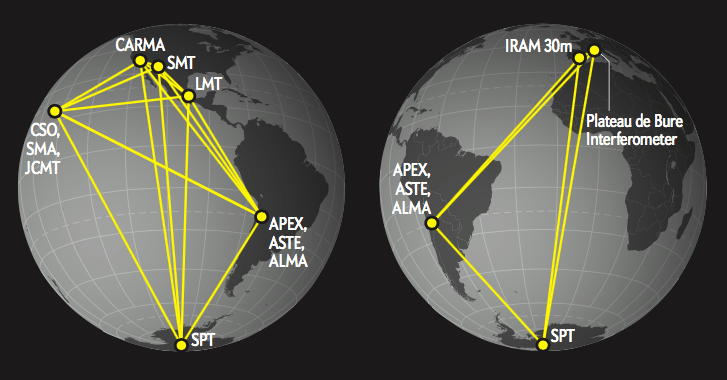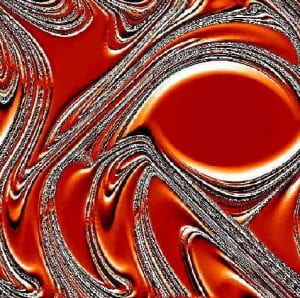[ct_focus background=”#395273″ gradient=”#444444″ color=”light” style=”normal” ][ct_section title=”Imaging the Horizons of Black Holes” subtitle=”” background=”” gradient=”” color=”dark” padding=”10px” ] Black holes are some of the smallest (in size) objects in the Universe. Yet, it is near their horizons that we find the most warped spacetimes that are accessible to us. The Event Horizon Telescope is a Very Long Baseline Interferometer that spans the entire globe and will observe a number of black holes at millimeter wavelengths in order to capture, for the first time, their images with horizon-scale resolution. Our group uses High Performance Computer Clusters to generate simulations of what these images are expected to look like and develops analysis tools that will allow us to exploit the full extent of the upcoming observations. We have also devised novel tests of General Relativity with the upcoming Event Horizon Telescope observations that will allow us to test the No-Hair Theorem and the Cosmic Censorship Hypothesis
Black holes are some of the smallest (in size) objects in the Universe. Yet, it is near their horizons that we find the most warped spacetimes that are accessible to us. The Event Horizon Telescope is a Very Long Baseline Interferometer that spans the entire globe and will observe a number of black holes at millimeter wavelengths in order to capture, for the first time, their images with horizon-scale resolution. Our group uses High Performance Computer Clusters to generate simulations of what these images are expected to look like and develops analysis tools that will allow us to exploit the full extent of the upcoming observations. We have also devised novel tests of General Relativity with the upcoming Event Horizon Telescope observations that will allow us to test the No-Hair Theorem and the Cosmic Censorship Hypothesis
You can read more in a recent article I co-authored for the September 2015 special issue of Scientific American on the 100th anniversary of the Theory of General Relativity[/ct_section][/ct_focus]
[ct_focus background=”#333333″ gradient=”#888888″ color=”dark” style=”normal” ][ct_section title=”Testing General Relativity Across Different Scales” subtitle=”” background=”” gradient=”” color=”dark” padding=”10px” ]
General Relativity has been subjected to numerous experimental tests, mostly in the weak gravitational fields found in our Solar System and has passed all of them with flying colors. In contrast, gravity in the strong-field regime and at cosmological settings has been largely unconstrained by experiments, with only limited studies around neutron stars in binaries and using cosmological structure formation. A large class of gravity theories can be constructed that obey the Einstein equivalence principle and cannot be rejected by solar system tests, but that diverge from general relativity in other regimes. Our aim is to explore how tests of General Relativity at different scales can be compared and contrasted, as well as to design new tests of the theory that span different scales.
You can find more information in this technical article I wrote for the online journal Living Reviews in Relativity[/ct_section][/ct_focus]
[ct_focus background=”#888888″ gradient=”#395273″ color=”light” style=”normal” ][ct_section title=”Magnetohydrodynamic Turbulence in Shearing Flows” subtitle=”” background=”” gradient=”” color=”dark” padding=”10px” ]
Differentially rotating magnetohydrodynamic flows exhibit a number of instabilities. Some of these are believed to be responsible for generating and sustaining turbulence that allows black holes and neutron stars to accrete matter at high rates and become powerful X-ray sources in the sky. We are studying the onset and the outcome of magnetohydrodynamic turbulence, using analytical and numerical tools. [/ct_section][/ct_focus]
